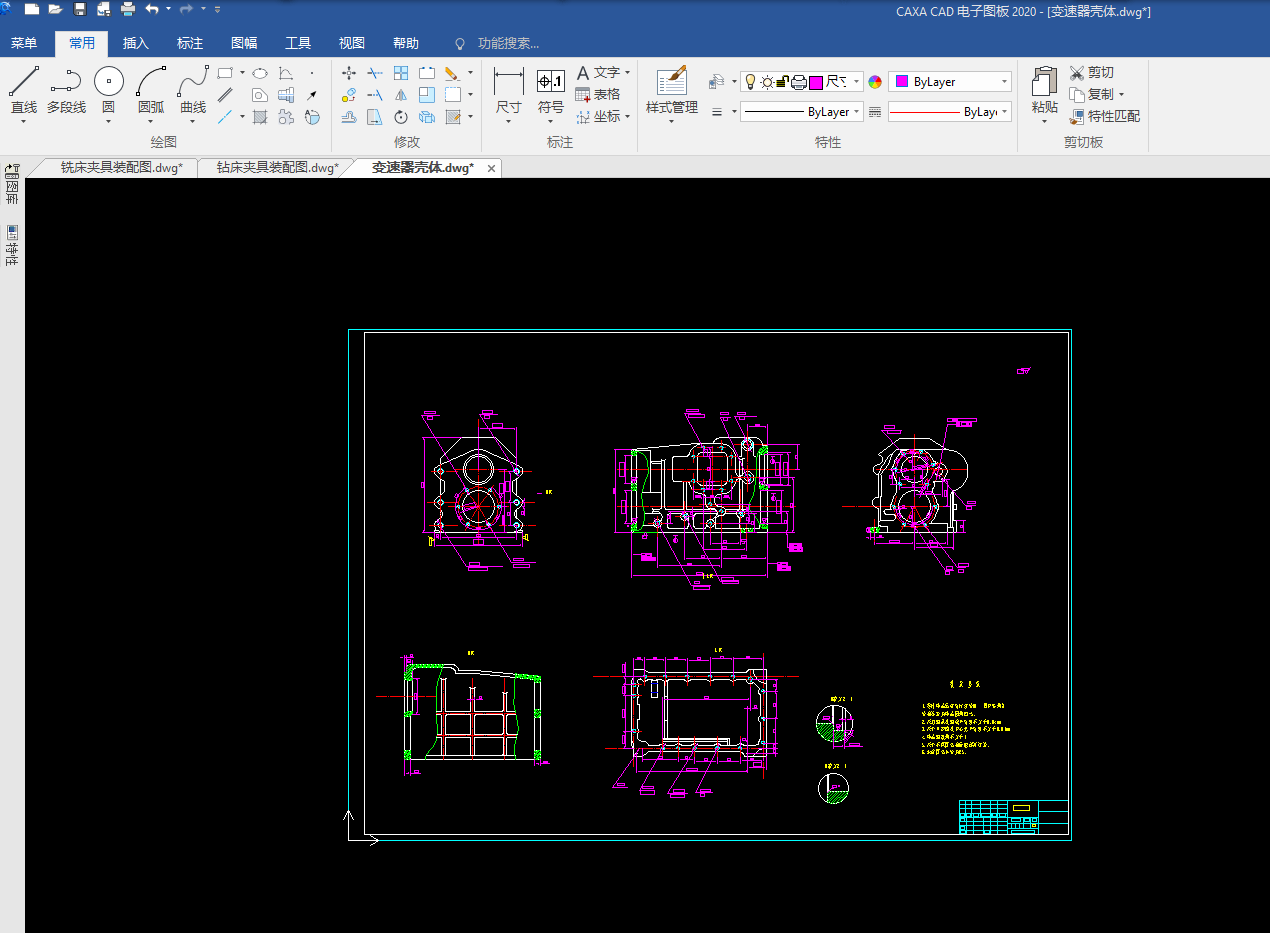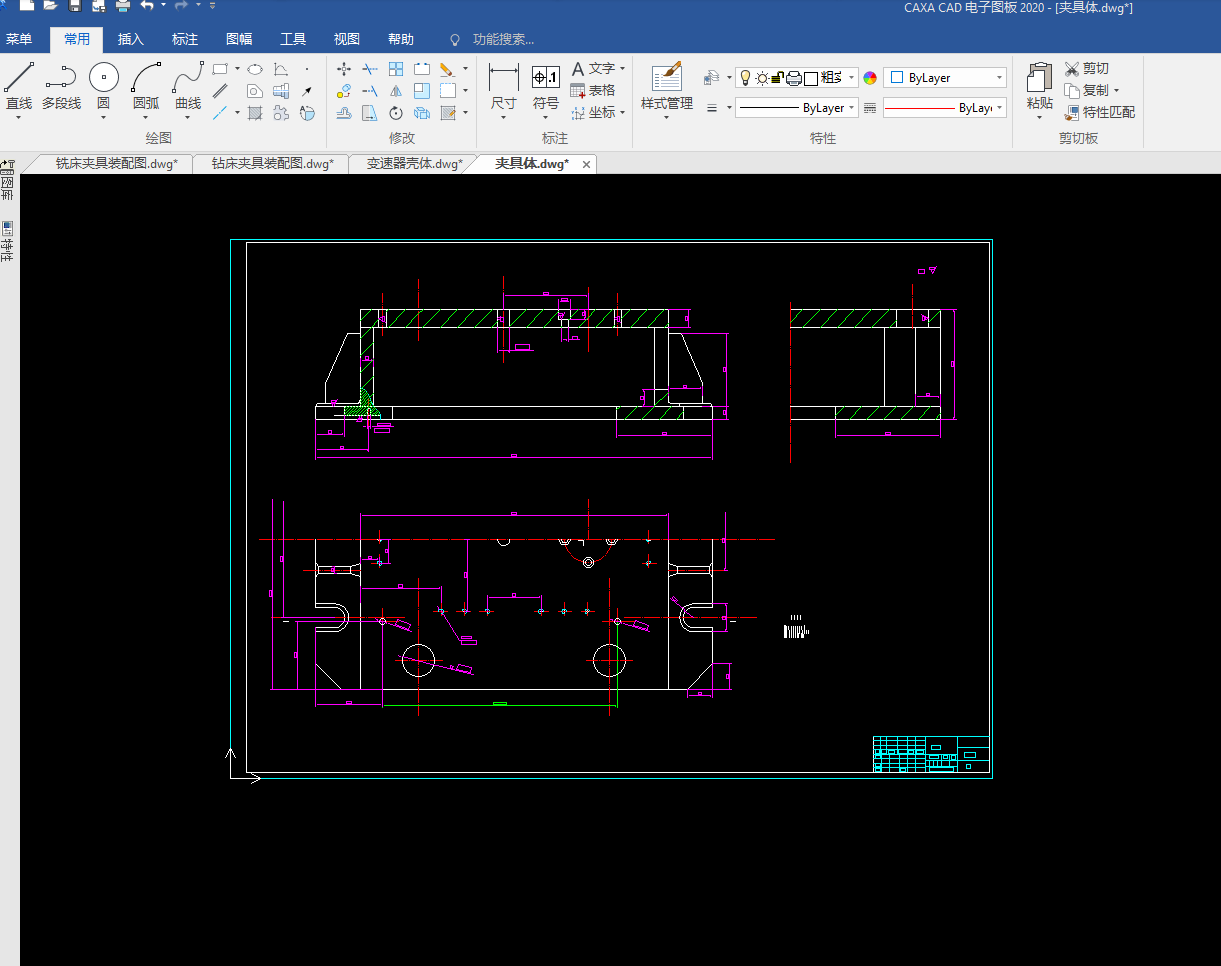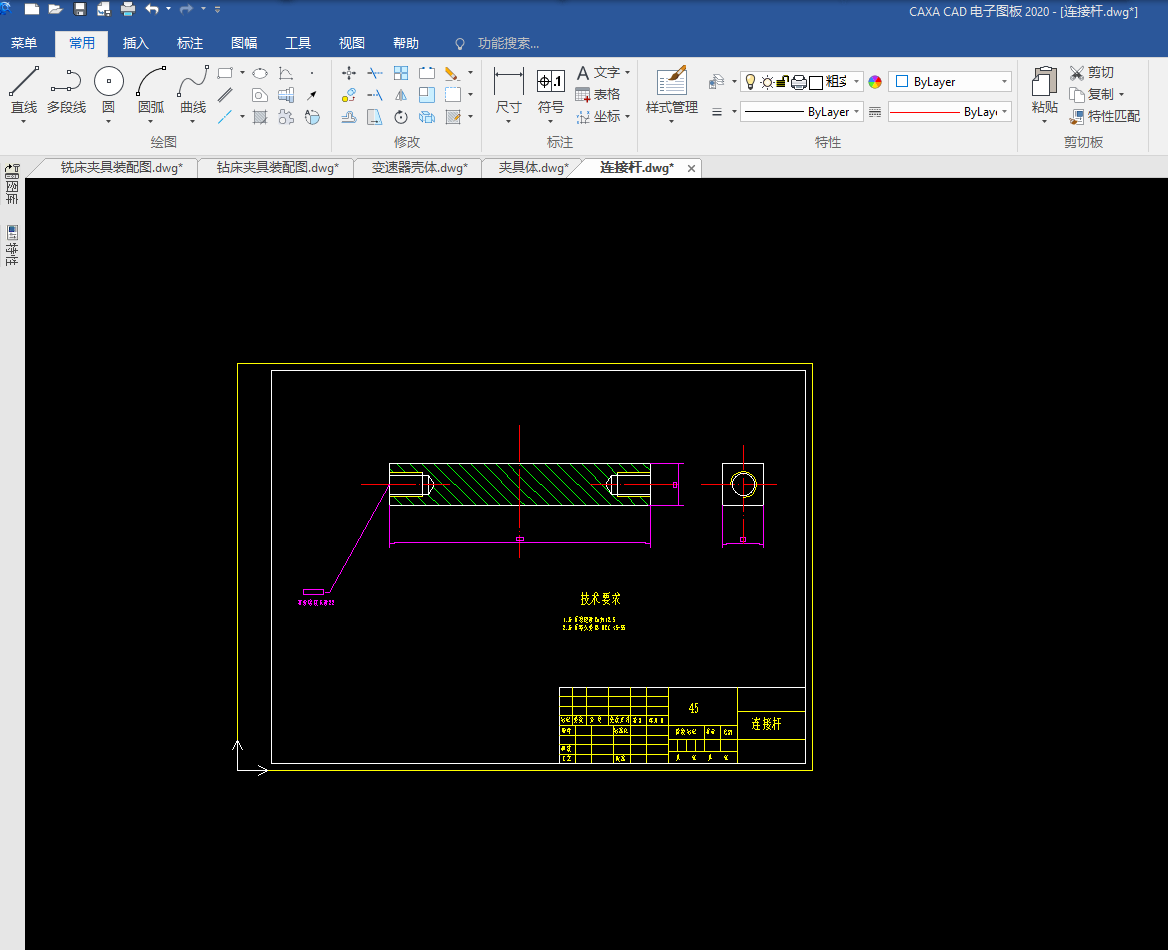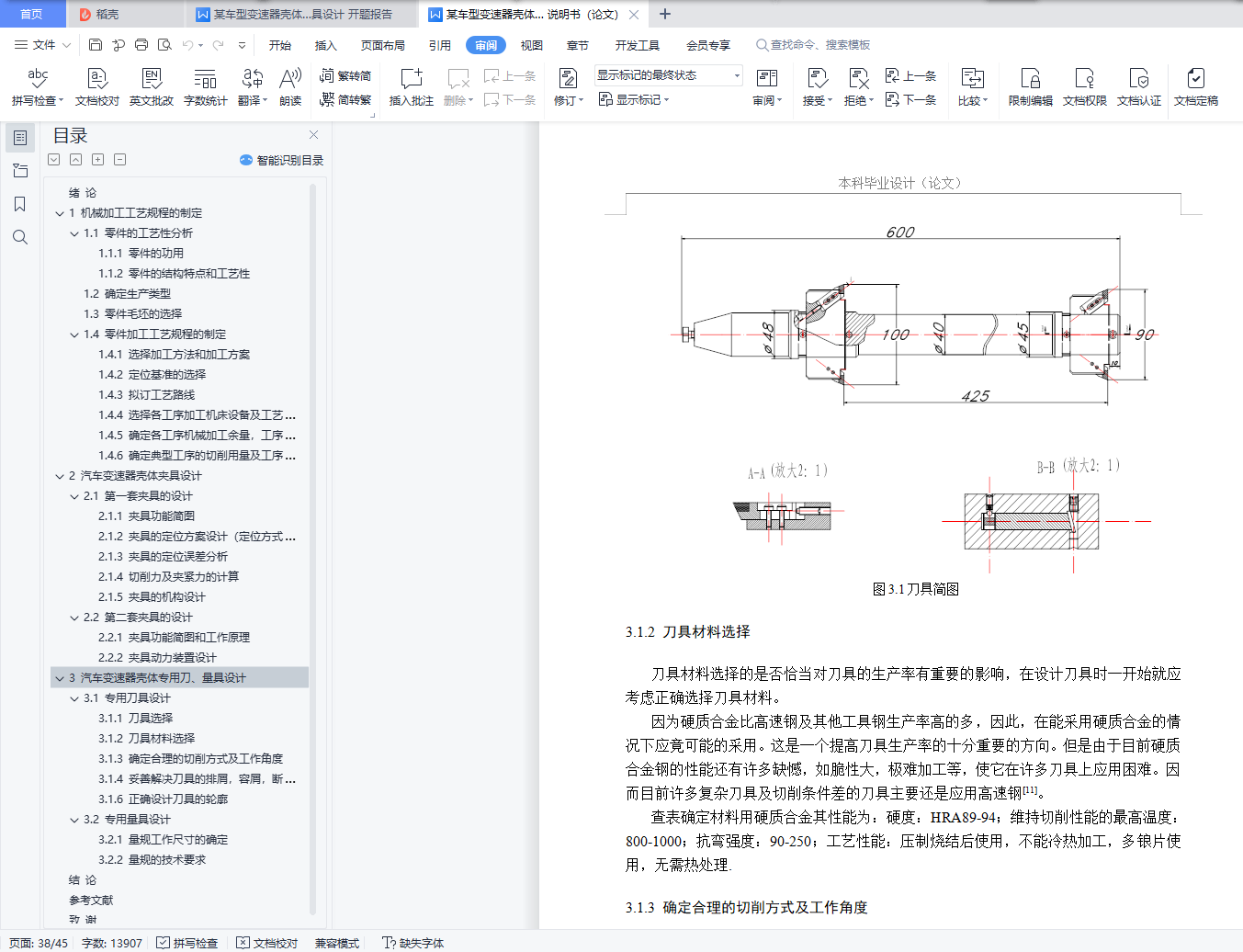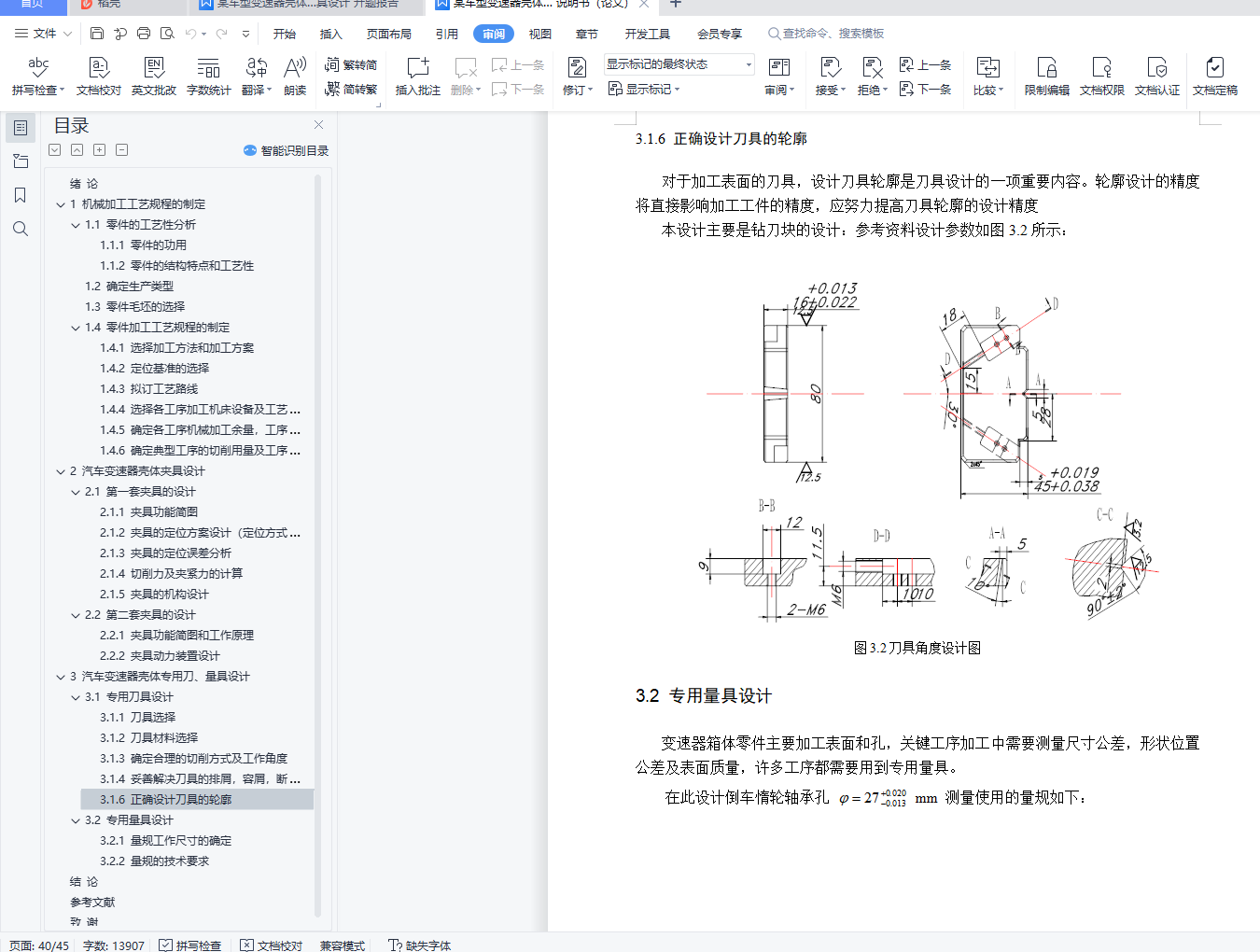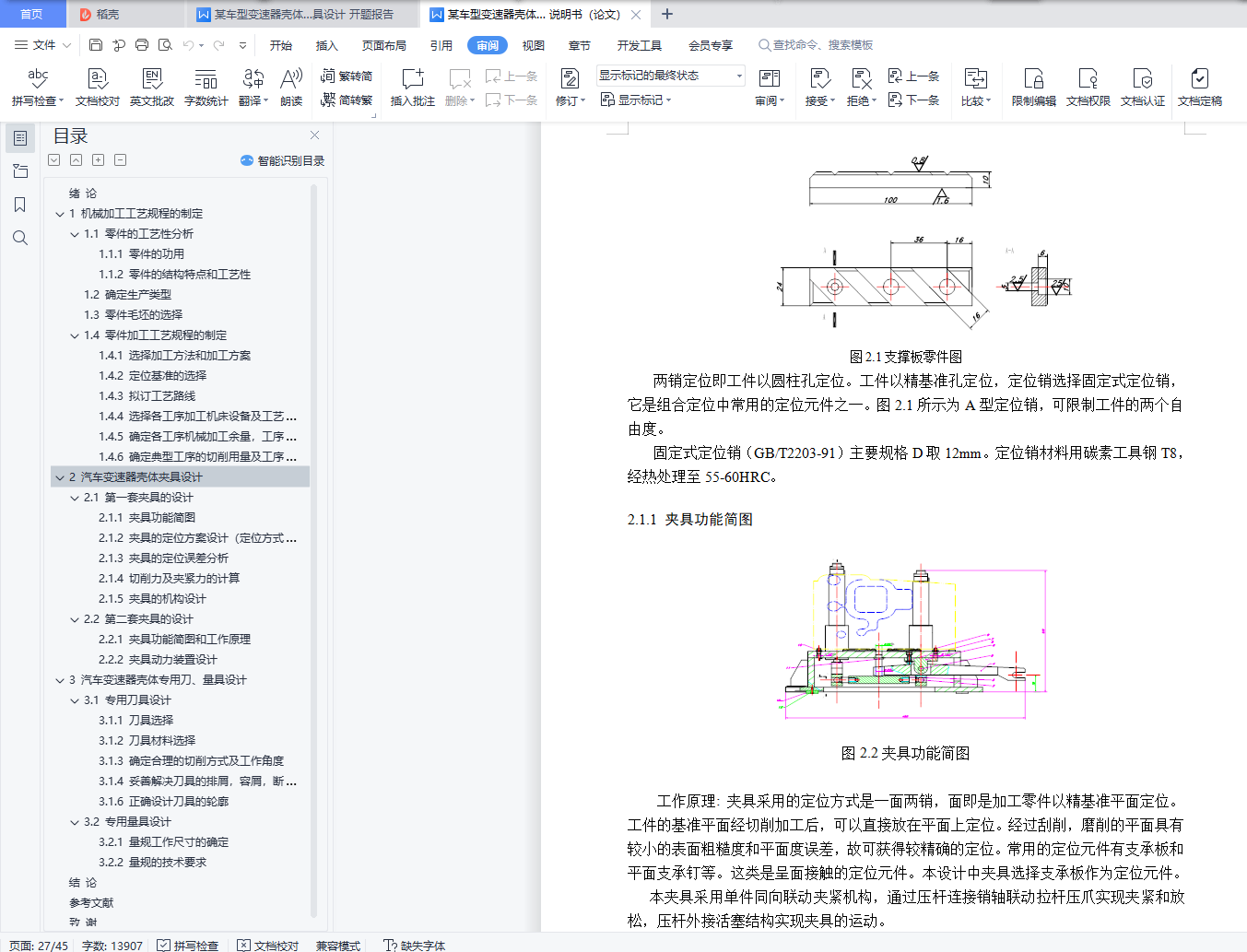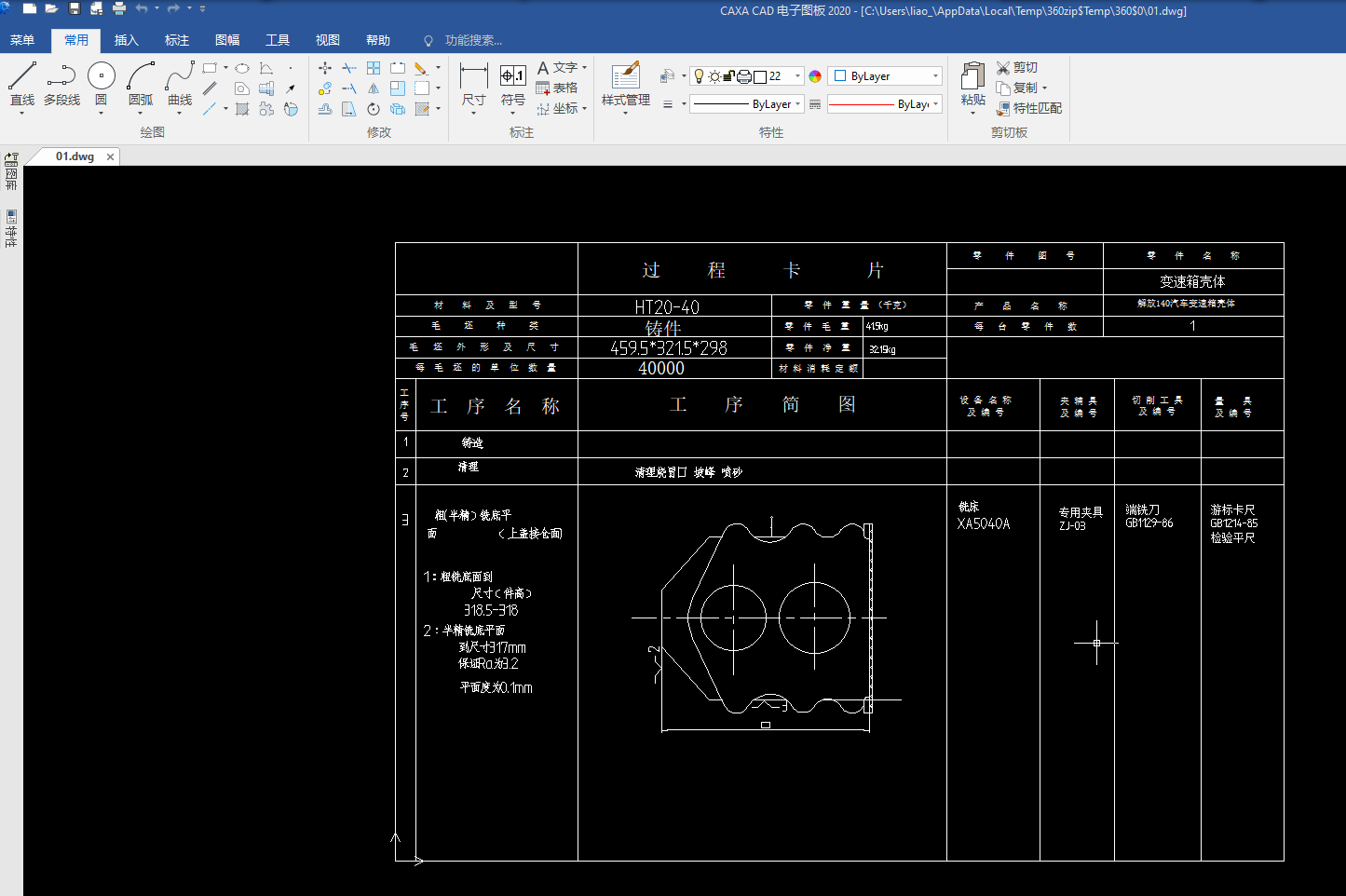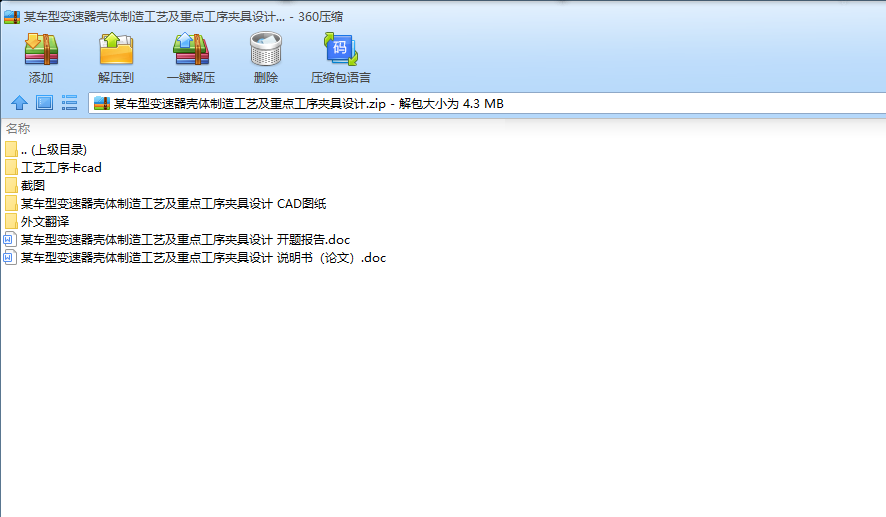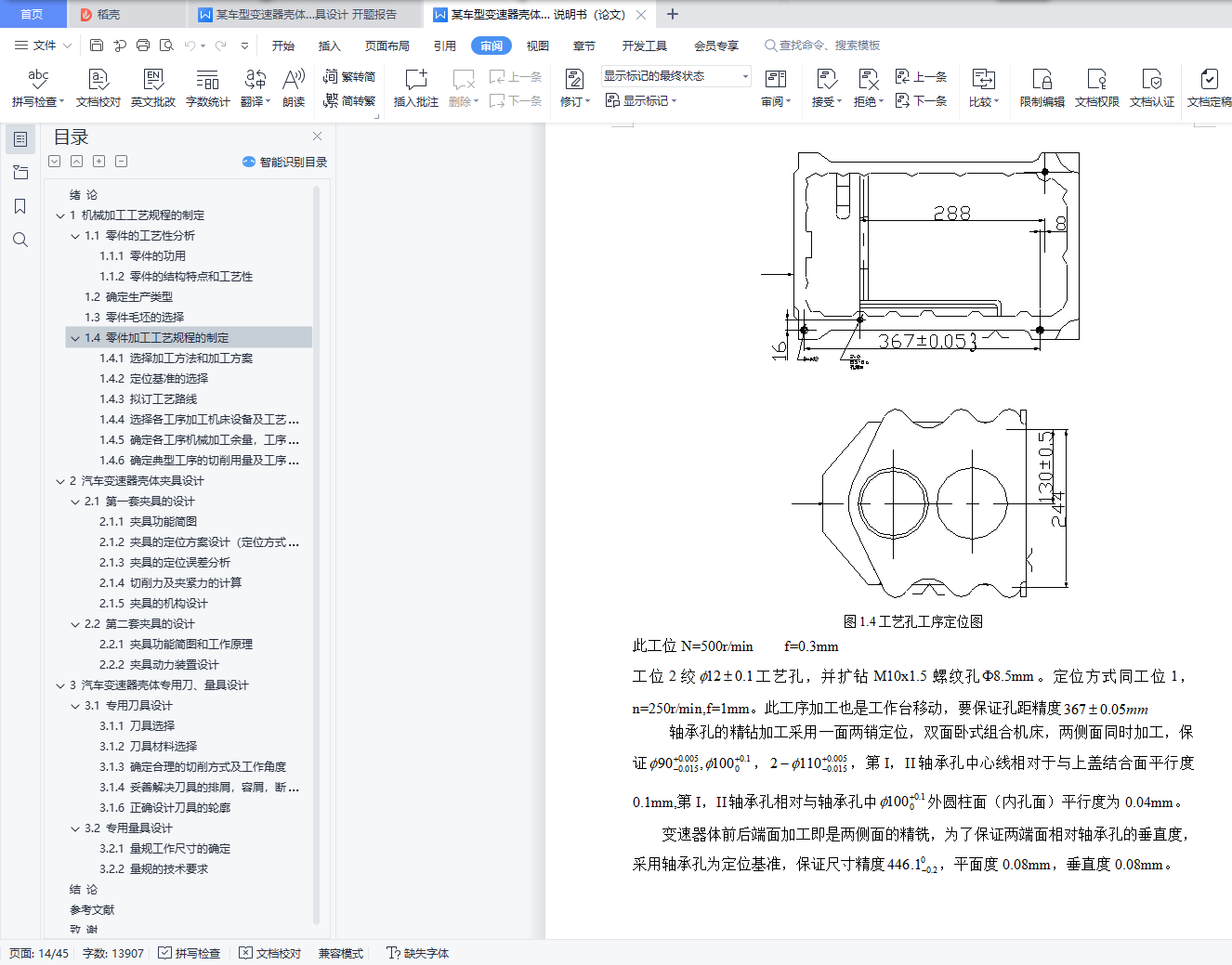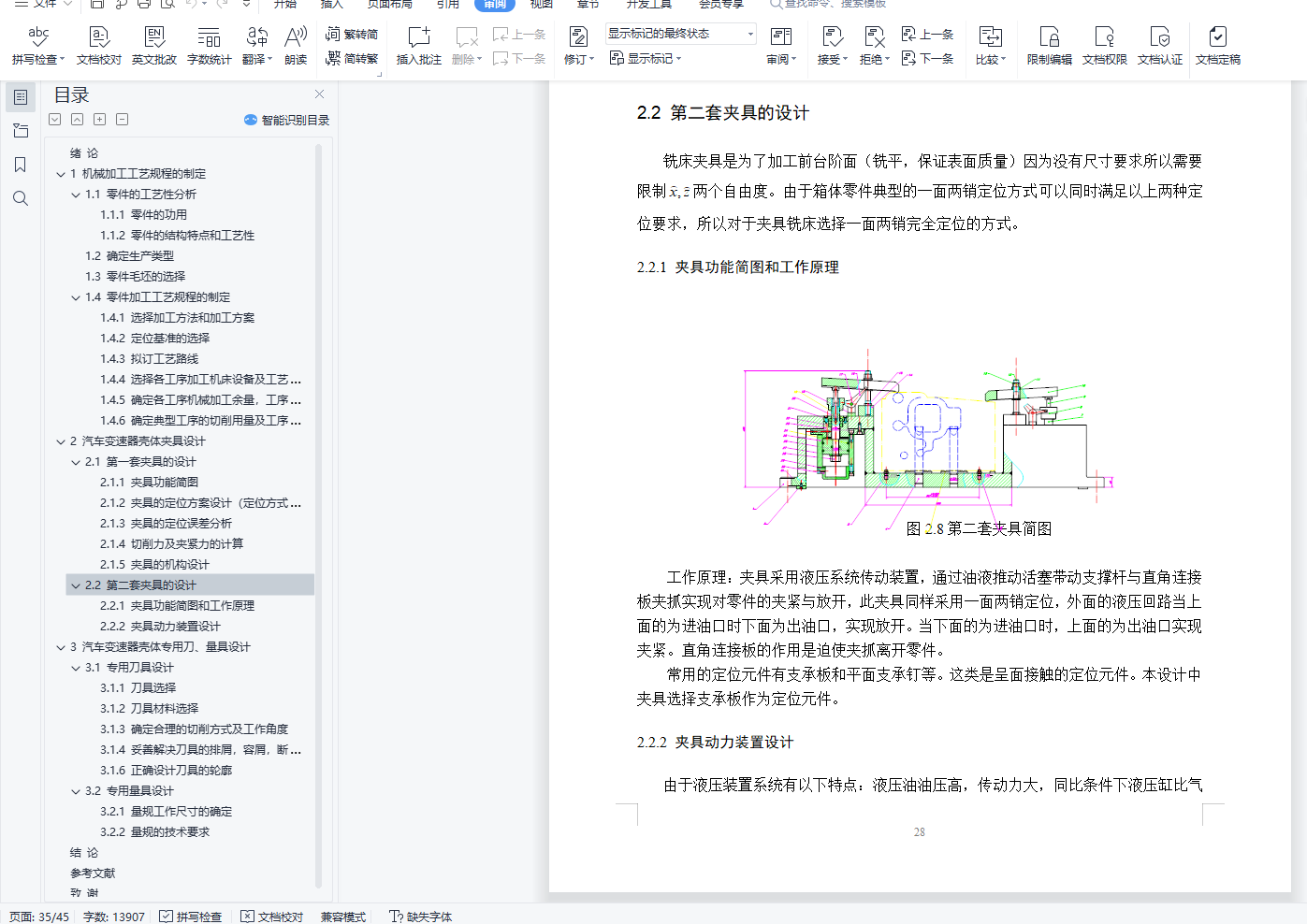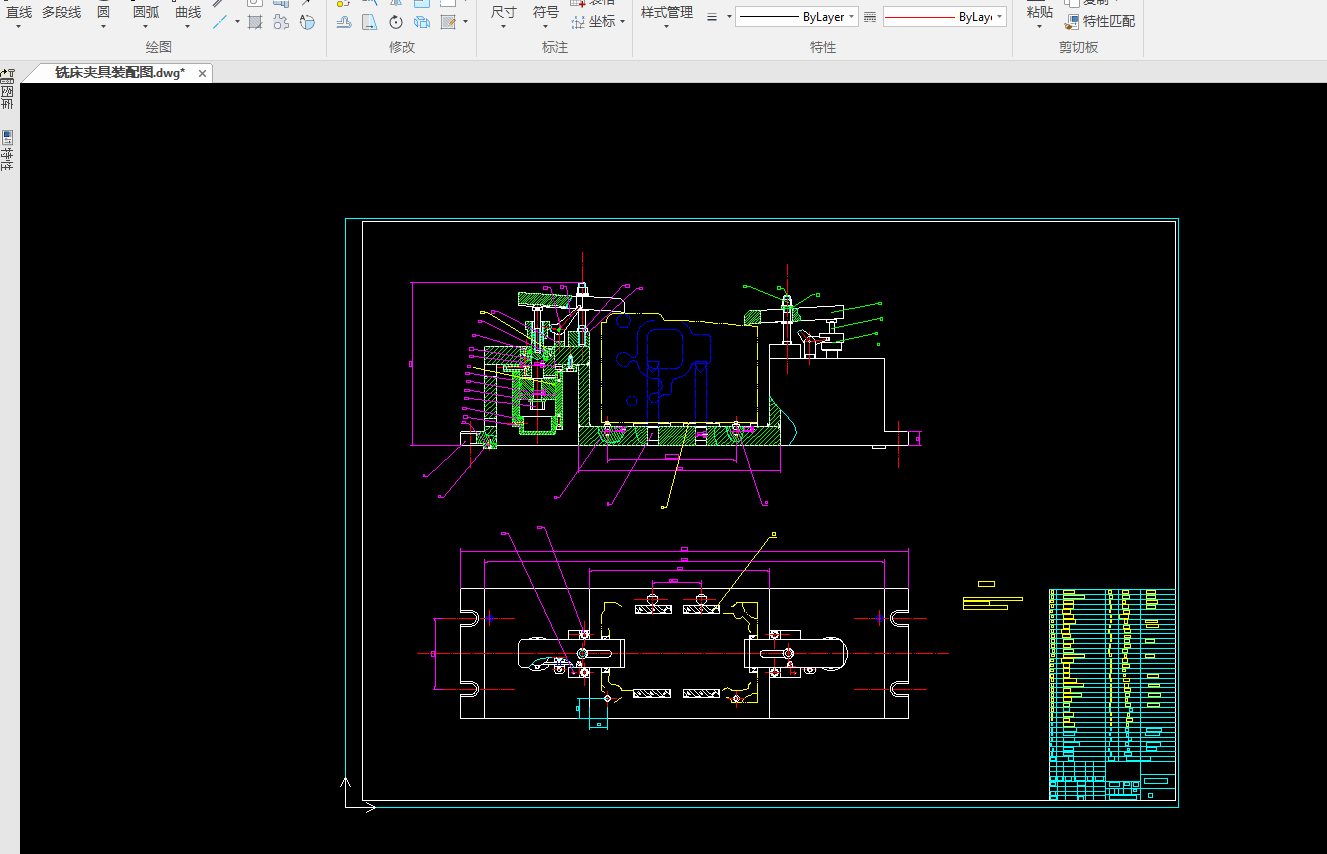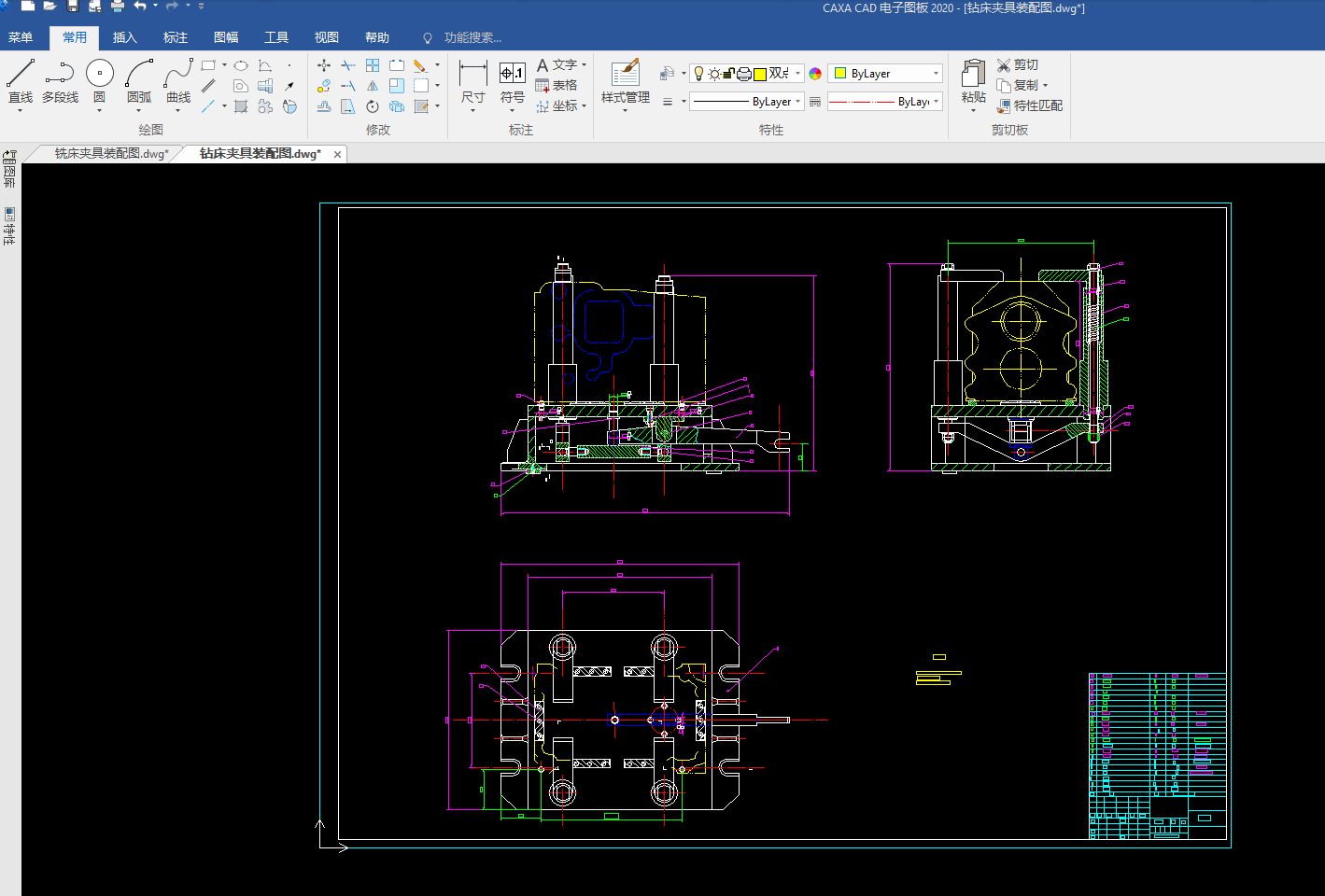某车型变速器壳体制造工艺及重点工序夹具设计
专业:机械设计制造及其自动化 学 号:201510111120
学生:张三 指导教师:李四/王五
摘要:随着国民经济的发展,人们生活水平的提高,中国市场对汽车的需求也加速增长,在2010年达到井喷式增长。而消费者对汽车及其零部件的功能,稳定性,质量要求也越来越高,为迎合市场需求和增强市场竞争力,产品更新换代周期越来越短,产品复杂程度逐步提高.在激烈的市场竞争中,如何对变化的市场需求作出快速作出反应.满足多品种,大中批量,高效率,低成本生产的需要是零部件加工生产线设计规划时重要考虑的问题。以高速数控加工中心为主,采用高速切削技术组线的数控柔性生产线技术已成为大批量切削加工的发展方向,其以自动化程度高,高效率,高柔性等特点普遍应用于国际,国内各汽车零部件加工行业。
本文拟对汽车变速器壳体加工工艺路线进行研究,设计,包括各道工序的加工方法,机床,刀具,夹具,辅具,量具的选择,基准面的选取,定位和夹紧方案的拟定。在加工工艺方面将从分析汽车变速器壳体的工艺、技术要求入手,确定毛坯、拟订加工工艺路线;确定各工序所采用的设备;确定各工序所需要使用的刀具,夹具,量具,和辅助设备;确定各主要工序的技术要求和检验方法;确定各工序的加工余量、计算工序尺寸与公差;确定切削用量及估算基本工序时间。夹具设计方面将由确定夹具的类型开始进行定位设计;确定工件的夹紧方式,选择夹紧装置;确定刀具的对刀导向方案选择对刀元件和导向元件;确定夹具与机床的连接方式;确定其他元件和装置的结构形式;确定总体布局和夹具体的结构形式;绘制夹具方案设计图;进行工序精度分析;对动力夹紧装置进行夹紧力演算等等。
最终设计出适用于大批量,流水线生产的汽车变速箱壳体加工工艺与夹具,为工厂实际生产工作提供具有参考价值的创新思路。
关键词:汽车;变速器;变速器壳体;工艺设计;夹具设计
The Subject of Graduation Design (Thesis) of
Major:Mechanical Manufacture and Automation Student ID:201510111120
Student:Zhang San Instructor:Li Si/Wang Wu
Abstract:With the development of the national economy and the improvement of people's living standards, the demand for cars in the Chinese market has also accelerated, reaching blowout growth in 2010. In order to meet the market demand and enhance the market competitiveness, the product renewal cycle is shorter and shorter, and the complexity of the product is gradually improved. In the fierce market competition, how to respond quickly to the changing market demand. To meet the needs of multi-variety, large and medium batch, high efficiency and low cost production is an important consideration in the design and planning of parts processing line. The NC flexible production line technology with high speed NC machining center and high speed cutting technology has become the development direction of mass cutting. It is widely used in the world with the characteristics of high automation, high efficiency and high flexibility. Domestic auto parts processing industry.
In this paper, the machining process route of automobile transmission shell is studied and designed, including the machining method of each working procedure, machine tool, tool, fixture, auxiliary tool, measuring tool selection, datum selection, positioning and clamping scheme. In the aspect of machining technology, we will start with analyzing the process and technical requirements of automobile transmission shell, determine the blank, draw up the machining process route, determine the equipment used in each process, determine the tools, fixtures, measuring tools and auxiliary equipment needed in each process, determine the technical requirements and inspection methods of each main process, determine the machining allowance of each process, calculate the dimension and tolerance of each process, determine the cutting parameters and estimate the basic working procedure time. The fixture design will begin with the positioning design by determining the type of fixture; determining the clamping mode of the workpiece and selecting the clamping device; determining the tool alignment guide scheme and selecting the tool alignment element and guide element; determining the connection mode between the fixture and the machine tool; determining the structure of other components and devices; determining the overall layout and clamping structure; drawing the fixture scheme design; working procedure precision analysis; clamping force calculation of the power clamping device, etc.
Finally, the processing technology and fixture of automobile gearbox shell suitable for mass and assembly line production are designed, which provides innovative ideas with reference value for the actual production work of the factory.
Key words:Automobile; transmission; transmission housing; process design; fixture design
目 录
绪 论
1 机械加工工艺规程的制定
1.1 零件的工艺性分析
1.1.1 零件的功用
1.1.2 零件的结构特点和工艺性
1.2 确定生产类型
1.3 零件毛坯的选择
1.4 零件加工工艺规程的制定
1.4.1 选择加工方法和加工方案
1.4.2 定位基准的选择
1.4.3 拟订工艺路线
1.4.4 选择各工序加工机床设备及工艺装备
1.4.5 确定各工序机械加工余量,工序尺寸及表面粗糙度
1.4.6 确定典型工序的切削用量及工序基本工时定额
2 汽车变速器壳体夹具设计
2.1 第一套夹具的设计
2.1.1 夹具功能简图
2.1.2 夹具的定位方案设计(定位方式、元件等)
2.1.3 夹具的定位误差分析
2.1.4 切削力及夹紧力的计算
2.1.5 夹具的机构设计
2.2 第二套夹具的设计
2.2.1 夹具功能简图和工作原理
2.2.2 夹具动力装置设计
3 汽车变速器壳体专用刀、量具设计
3.1 专用刀具设计
3.1.1 刀具选择
3.1.2 刀具材料选择
3.1.3 确定合理的切削方式及工作角度
3.1.4 妥善解决刀具的排屑,容屑,断屑问题
3.1.6 正确设计刀具的轮廓
3.2 专用量具设计
3.2.1 量规工作尺寸的确定
3.2.2 量规的技术要求
结 论
参考文献
致 谢
